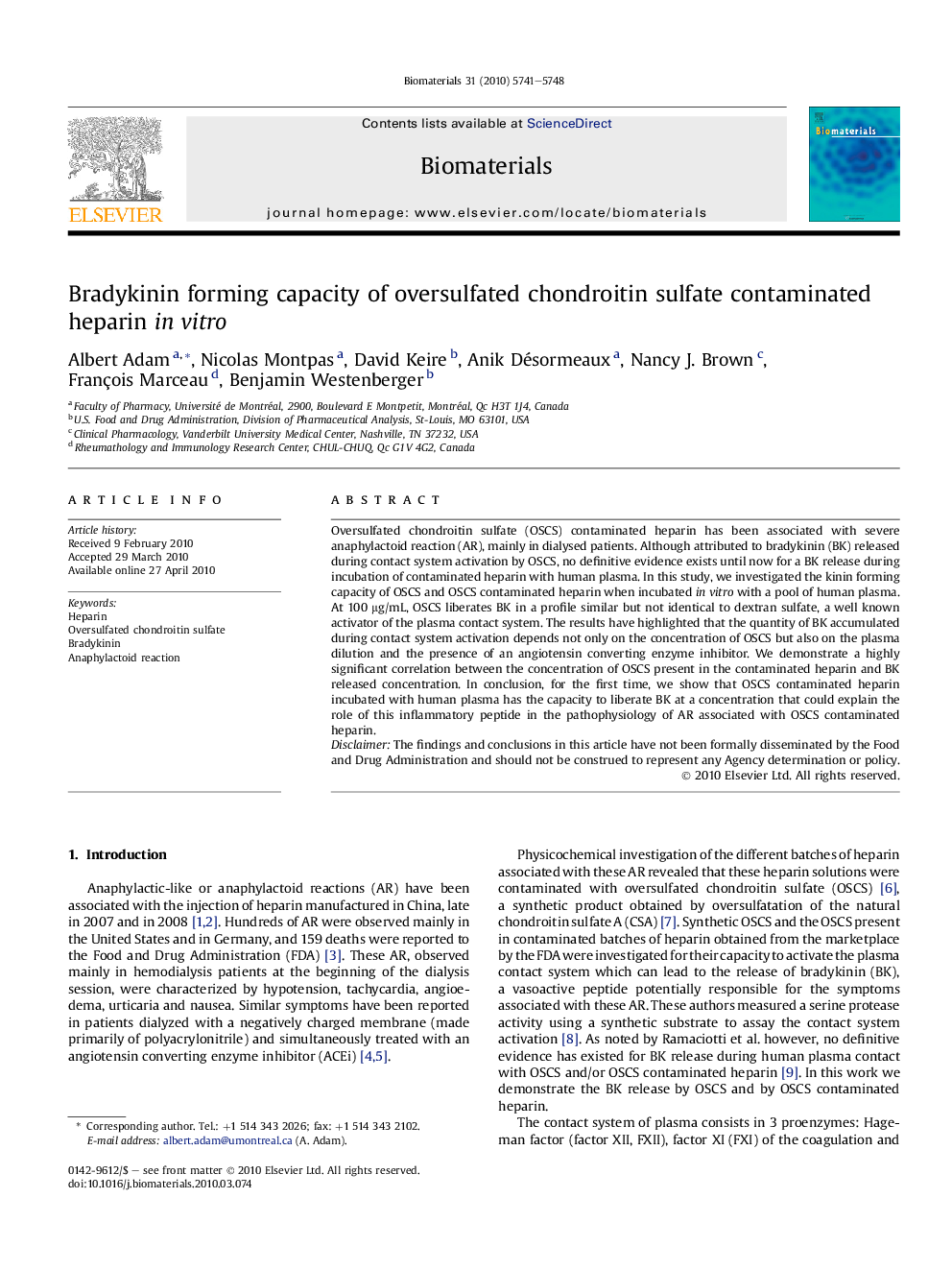| Article ID | Journal | Published Year | Pages | File Type |
|---|---|---|---|---|
| 8180 | Biomaterials | 2010 | 8 Pages |
Oversulfated chondroitin sulfate (OSCS) contaminated heparin has been associated with severe anaphylactoid reaction (AR), mainly in dialysed patients. Although attributed to bradykinin (BK) released during contact system activation by OSCS, no definitive evidence exists until now for a BK release during incubation of contaminated heparin with human plasma. In this study, we investigated the kinin forming capacity of OSCS and OSCS contaminated heparin when incubated in vitro with a pool of human plasma. At 100 μg/mL, OSCS liberates BK in a profile similar but not identical to dextran sulfate, a well known activator of the plasma contact system. The results have highlighted that the quantity of BK accumulated during contact system activation depends not only on the concentration of OSCS but also on the plasma dilution and the presence of an angiotensin converting enzyme inhibitor. We demonstrate a highly significant correlation between the concentration of OSCS present in the contaminated heparin and BK released concentration. In conclusion, for the first time, we show that OSCS contaminated heparin incubated with human plasma has the capacity to liberate BK at a concentration that could explain the role of this inflammatory peptide in the pathophysiology of AR associated with OSCS contaminated heparin.DisclaimerThe findings and conclusions in this article have not been formally disseminated by the Food and Drug Administration and should not be construed to represent any Agency determination or policy.
